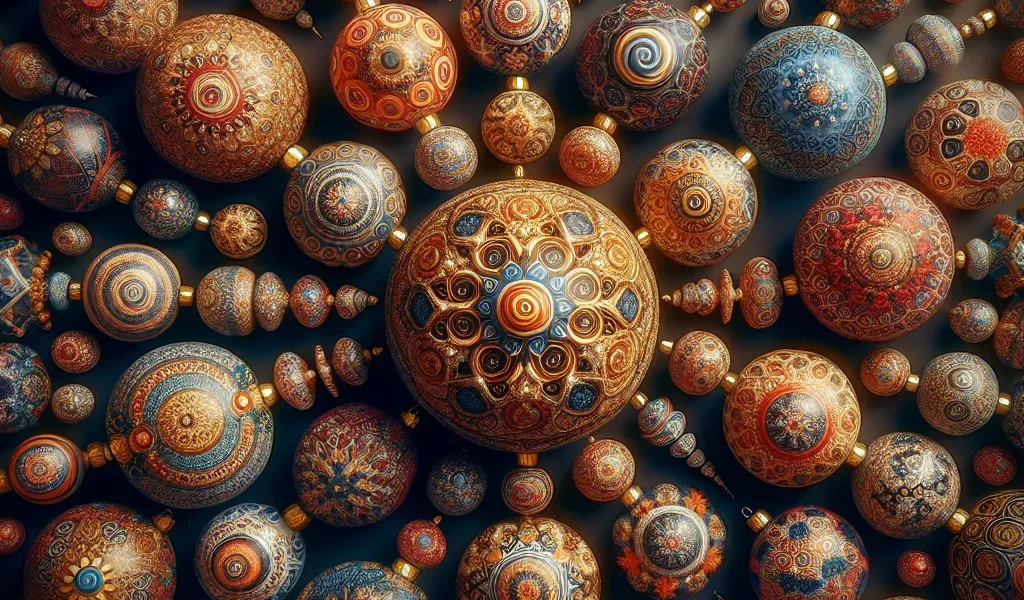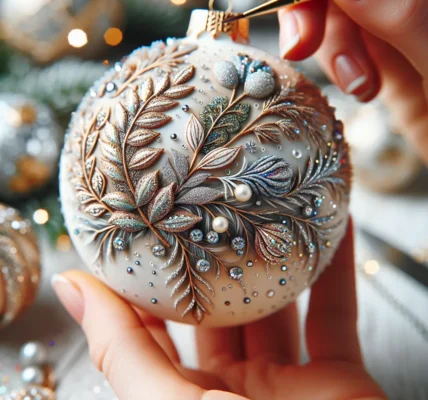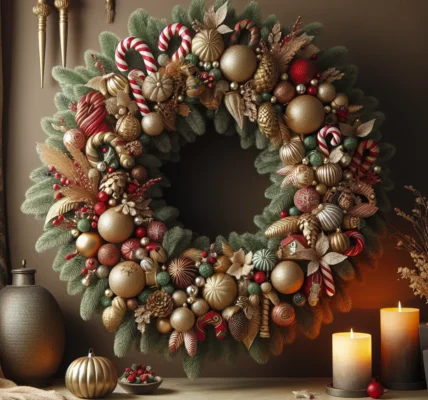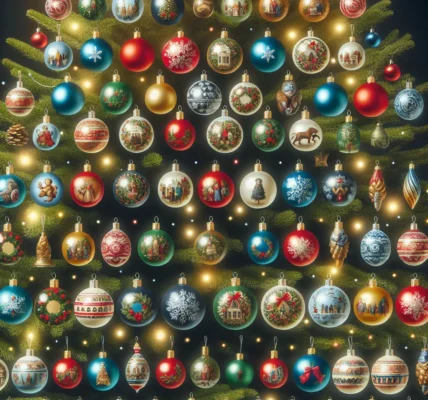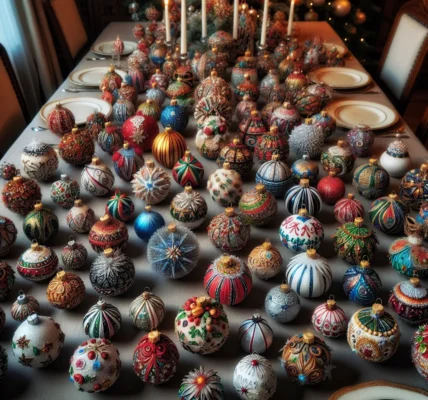Evolution of Christmas Baubles: From Origins to Modern Times
Christmas baubles, also known as Christmas ornaments or decorations, have a rich history and cultural significance dating back to the 16th century in Germany. The evolution of Christmas baubles can be traced from their origins to modern times, reflecting changes in materials, designs, and cultural practices.
Originally, Christmas trees were adorned with fruits, nuts, and other natural materials. It was not until the 19th century that the tradition of using glass baubles on Christmas trees became popular. These baubles were handcrafted and delicate, often depicting religious motifs or festive scenes.
As time progressed, the production of Christmas baubles became more industrialized, leading to a wider variety of designs and materials. In the 20th century, the introduction of electric lighting and tinsel further enhanced the beauty of Christmas trees, influencing the designs of baubles to complement the overall decorative theme.
Today, Christmas baubles come in a myriad of designs, colors, and materials, including glass, plastic, and metal. They are not only hung on Christmas trees but also used for various decorative purposes, such as adorning wreaths, garlands, and table centerpieces. Moreover, personalized and themed baubles have become increasingly popular, allowing individuals to express their unique styles and interests during the holiday season.
In conclusion, the evolution of Christmas baubles reflects the changing trends and cultural influences throughout history. From humble origins to modern-day diversity, these ornaments continue to hold a special place in the hearts of people around the world during the festive season.
Symbolism and Tradition: The Cultural Importance of Christmas Baubles
During the holiday season, Christmas baubles hold a significant cultural importance in many parts of the world. These colorful ornaments, traditionally hung on trees, carry a deep symbolism and are an integral part of Christmas traditions. The history of Christmas baubles dates back to the 16th century in Germany, where they were initially crafted from glass, metal, or even wood. Over time, they evolved into the shiny, delicate spheres that we recognize today.
Symbolically, Christmas baubles represent various aspects of the holiday season. The spherical shape is often associated with unity and completeness, symbolizing the gathering of families and loved ones during this festive time. The reflective surfaces of baubles are also seen as a representation of self-reflection and introspection, reminding individuals to contemplate the year gone by and look forward to the new one.
Furthermore, the tradition of adorning Christmas trees with baubles has deep cultural roots. It is believed that the practice originated in 16th century Germany when trees were decorated with apples to symbolize the Garden of Eden during the Christmas season. As the tradition spread, apples were eventually replaced with colorful baubles, and the practice became widespread in various cultures.
In modern times, Christmas baubles have become a universal symbol of the holiday season. Their presence in homes and public spaces signifies the joy and warmth associated with Christmas. Families often have cherished collections of baubles, each holding sentimental value and memories of past celebrations.
In conclusion, the cultural significance of Christmas baubles transcends their decorative function. They embody the spirit of togetherness, reflection, and tradition, making them a cherished symbol of the holiday season for people around the world.
Remember to conclude your article by mentioning the main aspects of the mentioned points.
The Art of Christmas Bauble Making: Craftsmanship and Innovation
Christmas baubles, also known as ornaments, have been an integral part of holiday decorations for centuries. The art of Christmas bauble making has a long and storied history, deeply rooted in craftsmanship and innovation.
Originally, Christmas baubles were handmade out of materials like glass, wood, or metal. Skilled artisans would meticulously craft each bauble, often incorporating intricate designs and vibrant colors. This craftsmanship was a labor of love, with each bauble representing the creativity and dedication of its maker.
As time progressed, the art of Christmas bauble making saw continuous innovation. The Industrial Revolution brought about mass production techniques, making baubles more accessible to the general public. This shift led to a diversification of styles and materials, with baubles being crafted from delicate blown glass to intricate hand-painted designs.
In recent times, the art of Christmas bauble making has seen a resurgence in handcrafted, artisanal approaches. Many contemporary craftsmen and artists are reviving traditional techniques and infusing them with modern creativity. This marriage of tradition and innovation has resulted in a breathtaking array of unique and artistic Christmas baubles that capture the essence of both the old and the new.
Today, the craftsmanship and innovation behind Christmas bauble making continue to play a vital role in both cultural traditions and artistic expression. The meticulous attention to detail, the creativity in design, and the fusion of traditional methods with contemporary influences all contribute to the enduring appeal of Christmas baubles as cherished symbols of the holiday season.
Christmas Baubles Around the World: Diverse Cultural Perspectives
Christmas baubles, also known as Christmas ornaments, hold a significant place in the festive tradition of decorating Christmas trees around the world. Originating in Germany in the 16th century, these decorations have evolved and diversified, reflecting the unique cultural perspectives of different regions and countries.
In Germany, where the tradition of Christmas baubles first began, these decorations were originally handcrafted from glass. The intricate designs and vibrant colors of traditional German Christmas baubles symbolized the festive spirit and were often passed down through generations as cherished family heirlooms.
Meanwhile, in Eastern European countries such as Poland and Ukraine, Christmas baubles took on a distinctive form known as “kugels,” which were crafted from silvered glass and later evolved into the colorful glass baubles that are popular today.
In the United States, Christmas baubles gained popularity during the 19th century, with the introduction of mass-produced glass ornaments. These baubles often featured American iconography and imagery, reflecting the cultural values and traditions of the nation.
In Latin American countries, the tradition of Christmas baubles is characterized by vibrant colors and handmade craftsmanship, often incorporating local materials and traditional motifs that reflect the rich cultural heritage of the region.
Across Asia, Christmas baubles have been adapted to incorporate local cultural elements, such as Japanese origami ornaments, Indian hand-painted baubles, and Chinese paper lantern-inspired decorations, showcasing a fusion of traditional ornamentation with the global celebration of Christmas.
Overall, the diverse cultural perspectives on Christmas baubles around the world highlight the universal appeal of these decorations in spreading joy and festive spirit during the holiday season, while also serving as a testament to the rich tapestry of global traditions and heritage.
